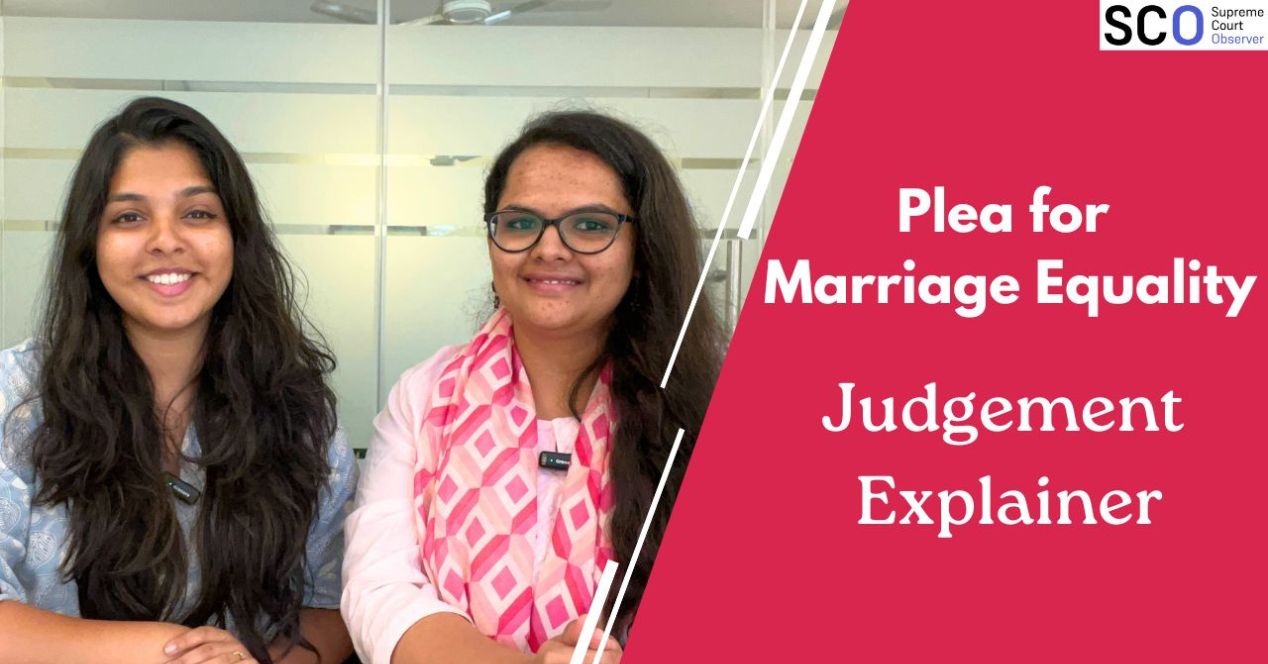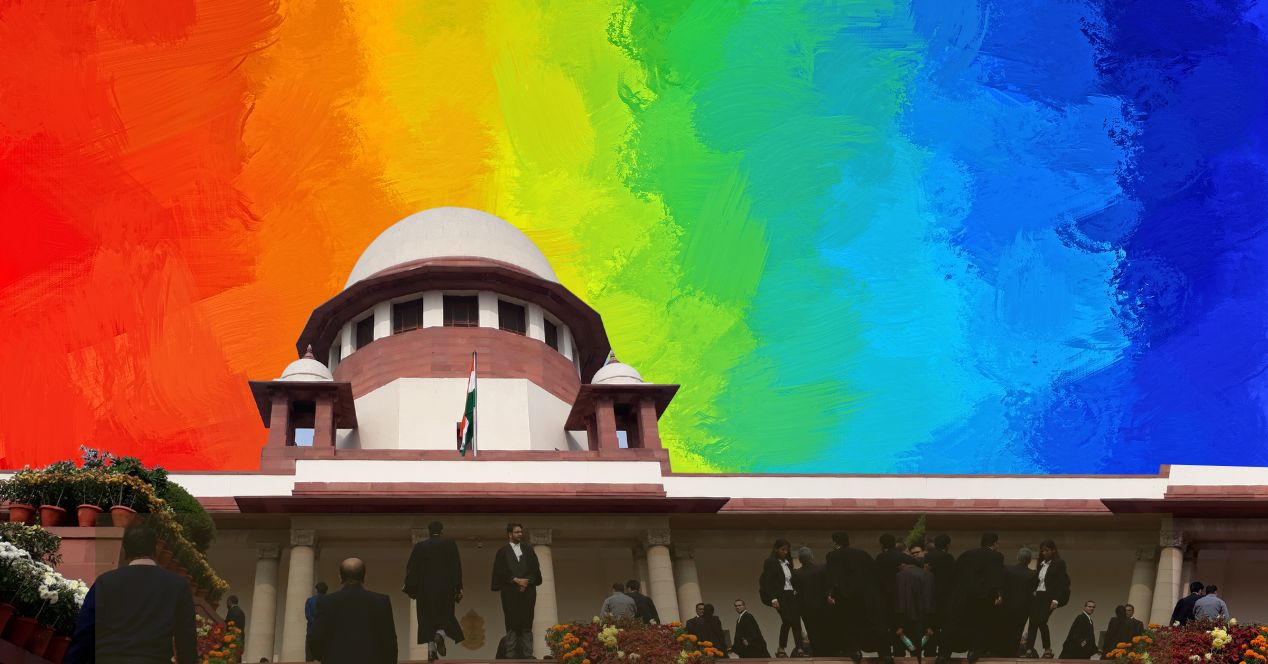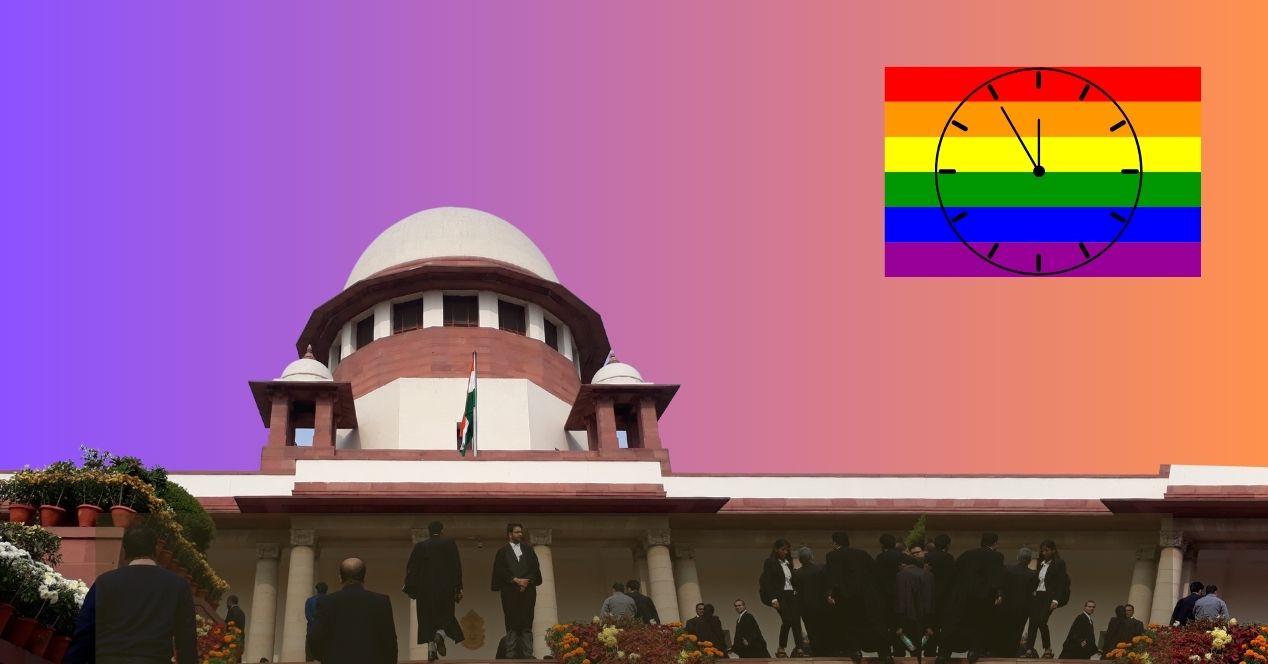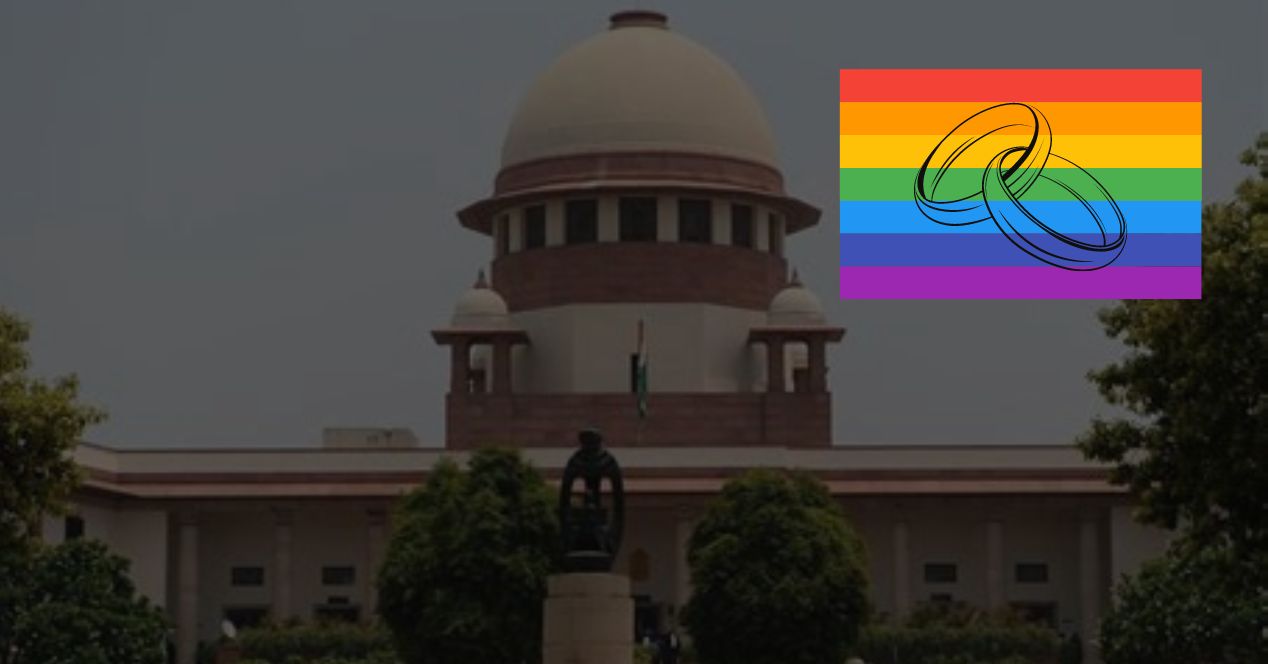Analysis
A Long Road to Nowhere: On the Many Disappointments of the Marriage Equality Case
The Court undertook a selective reading of its own jurisprudence while upholding the constitutionality of the Special Marriage Act

After what seemed like an eternity, the Supreme Court delivered a verdict on marriage equality on 17 October 2023. As news began to trickle in through the day, the verdict was met with disappointment and confusion. A five-judge Bench delivered four opinions and was split 3:2, with Justices Bhat, Kohli and Narasimha forming the majority opinion. Chief Justice Chandrachud and Justice Kaul wrote separate minority opinions.
While there were several matters on which the judges agreed and disagreed, the Court reached two conclusions. First, that there was no fundamental right to marry for anyone, let alone same-sex couples. Second, the Special Marriage Act, 1954 (‘SMA’) stood the test of constitutionality.
On the point of there being no fundamental right to marry, the judges were unanimous. On the second question, four judges upheld the constitutionality of the SMA, with only Justice Kaul dissenting on the ground that it violated the right to equality (Article 14). Yet, Justice Kaul refused to strike down the SMA or read it down because of the “interpretive difficulties” in doing so.
While there are many facets to the reasoning of the Court, this piece focuses on analysing the judicial reasoning on the constitutionality of the SMA. I argue that in upholding the constitutionality of the SMA, the court undertook a selective reading of its own jurisprudence at best, and abdicated its responsibility as a constitutional court at worst.
The petitioners’ case
The petitioners presented a three-pronged argument. First, following the rulings of the Court in Shafin Jahan and Shakti Vahini, they argued that the right to marry was a fundamental right protected under Articles 19 (freedom of speech and expression) and 21 (the right to life). Marriage enjoys an undeniable socio-cultural significance. The ability to marry a person of our choosing is therefore one of the most intimate and fundamental decisions of our lives, went the argument.
Second, marriage is a gateway to legal rights and entitlements. The option of nominating a spouse for pension and gratuity, or have them make end-of-life care decisions is not available to same-sex individuals. This violates the right to equality by creating a distinction between two classes of citizens: heterosexuals and non-heterosexuals.
Finally, underpinning both these arguments were submissions about constitutional morality. Relying on precedent, the petitioners argued that excluding LGBTIQ+ individuals from marriage denied them the dignity of full citizenship. This exclusion was governed by public morality and not a constitutional one. Since the Constitution is a “transformative” document, they contended, the courts should interpret laws in a way that re-orders societal relationships to bring them in line with constitutional values.
The problem of workability
If the SMA was indeed unconstitutional, what should the appropriate constitutional remedy be? On this point, the petitioners argued that the SMA be read down in a way to include same-sex couples. For instance, Section 4(c), which referred to the marriageable age of the bride and bridegroom as 18 years and 21 years respectively, was to be read as 18 years for a lesbian couple and 21 for a gay couple.
However, the Government of India argued that this exercise of reading down would be beyond the ambit of the Court. Simply striking down the SMA was also not an option because that would mean rescinding an otherwise beneficial legislation meant to enable inter-faith marriages. The difficulty with the reading down exercise was that the judges feared it would make the SMA gender neutral. Sections on marriageable age, prohibited degrees, grounds of divorce, maintenance and alimony are all gendered.
The Court felt that reading down the SMA through a judicial diktat would be undemocratic since changes with such widespread implications would need a more thorough democratic deliberation, which is the task for the legislature and the executive.
While it is hard to fault this conclusion, it is important to point out that the question of constitutionality and constitutional remedy, while interrelated, is not interdependent. A declaration of constitutional invalidity can be made without the law being struck down or read down. The Supreme Court has considerable freedom to do complete justice in any given situation. It is this distinction that all the judges, barring Justice Kaul, obfuscate.
Let’s take a closer look at how the judges responded to the arguments on the SMA’s constitutionality.
How did judges approach the SMA?
On the right to marry
On the question of whether the Constitution recognized a right to marry, the judges were unanimous in their disagreement. In his opinion, the CJI clarified that the judgements cited by the petitioner on this question (Shafin Jahan, Shakti Vahini, Puttaswamy) were not directly dealing with a fundamental right to marry, even though they made certain observations on the issue. These judgements, rather, were concerned with trying to more effectively enforce a statutory right that was already in existence (i.e. heterosexuals being able to get into interfaith and inter-caste marriages).
The CJI went on to reason that there was nothing in the text of the Constitution that pointed to the existence of a fundamental right to marry. The boundaries of marriage and the rights within it are derived from legislation. Put another way, since the State enables marriage, it can also do away with the mechanisms for its recognition. In a similar vein, Justice Bhat observed that simply because a social institution enjoys popularity, it cannot lead to the conclusion that it is a fundamental right.
I agree with this reasoning. Religion is perhaps an exception to this, but a right to religion is firmly enshrined in the Constitution based on the values of secularism it promotes. Marriage, per se, does not offer any such comparable value. Here, I must clarify that marriage is not the same thing as a right to intimacy or even a family, which I believe should be protected under Articles 21 and 19. Rather, marriage is only one way of expressing that intimacy, and of creating a family.
However, the majority opinions suggest that the judges weren’t driven by doubt about the value of the institution, but by their reluctance to impose positive obligations on the State to create a legal and bureaucratic machinery that allows marriage for all.
This logic is bizarre and goes against the Supreme Court’s own. In the past, the non-existence of a law or policy has not prevented the Court from setting out guidelines where it is clear that a right is being violated. In NALSA, the Court directed the State to provide reservations for transgender people. In Vishaka & Ors v. State of Rajasthan, the Court rode on India’s commitments under international law to create guidelines on sexual harassment at the workplace.
Justice Bhat did consider this precedent but distinguished it on the basis that, in Vishaka, “there was all round cooperation” and agreement that guidelines ought to be formulated by the Court. My submission is that the mere fact that the Union of India agreed with the stand of the petitioners is not enough to distinguish Vishaka from the present case. Courts are counter-majoritarian institutions. An elected government has to work within the framework of popular belief and mass opinion. But an independent judiciary does not have the same compulsion.
On Equality
The more compelling argument, in my opinion, was that of equality. If marriage is a State-made institution, the State has an obligation to make it available to all citizens equally. If it excludes a particular group of citizens, then there has to be a valid justification for doing so. In other words, what is offensive about the SMA is not that it violates a fundamental right to marry. Rather, it is the fact that the State denies equal access to the institution without justification.
The opinion of the majority on this count was disappointing, to say the least.
According to the ‘reasonable classification’ test, a law that has been challenged as unequal has to be tested on two prongs: whether the differentiation is intelligible, and whether it has a rational nexus with the law’s objective. Applying this test to the SMA, the majority opinion authored by Justice Bhat found that the SMA created two classes of people—heterosexuals and non-heterosexuals—but this differentiation was intelligible. Moreover, it had a rational nexus with the objective of the SMA, which was to give heterosexual couples the facility of civil marriage.
This is a rather strange conclusion to draw. While it is accepted that the lawmakers may not have imagined it applying to same-sex couples, it cannot be concluded that their objective was to specifically exclude non-heterosexuals from the institution of marriage. As Justice Kaul notes in his dissent, doing so is confusing the differentia with the object of the statute. For Justice Kaul, the true objective of the SMA is to facilitate inter-faith marriages by providing a framework of civil marriages outside of personal laws.
More importantly, Justice Kaul’s minority opinion reminded the Court that:
It is settled law that the Court can also examine the normative legitimacy and importance of the State objective, more so in a case such as this where sex (and thereby sexual orientation) is an ex-facie protected category under Article 15(1) of the Constitution.
If there was one overarching assurance post the decision of the Court in Navtej Johar, it was that the State could not discriminate on the grounds of sexual orientation and gender identity. Yet, that assurance has come to be challenged by the verdict in Supriyo.
On the whole, the impression Supriyo gives is that the queer community has rights, but only as long as the State has to do nothing about it. At an event organised by the National Network of LBI Women and Trans Persons, noted activist Chayanika Shah observed that reading the judgement was like trying to find “pearls amongst the pebbles.” That phrase quite neatly summed up this much awaited moment in India’s constitutional history.
Diksha Sanyal is an Assistant Professor at Jindal Global Law School and is currently pursuing a PhD at University College London.




